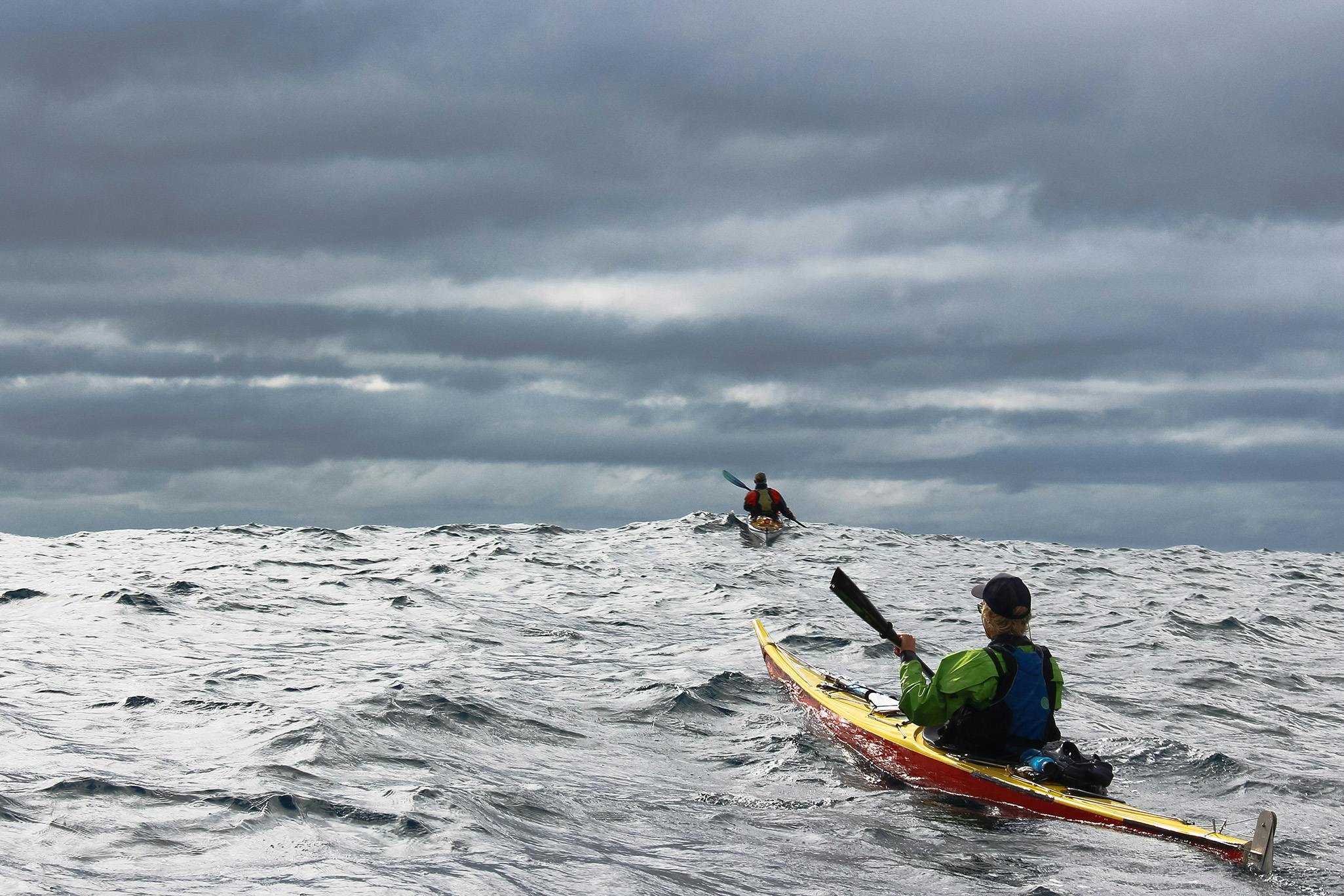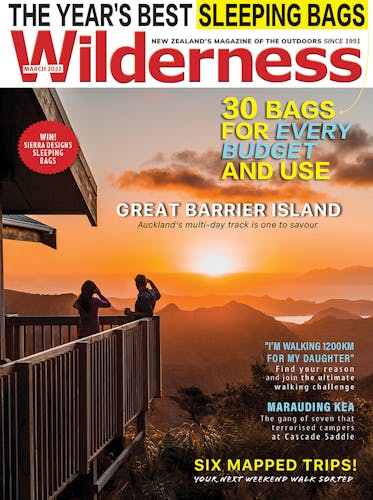In circumnavigating Rakiura by sea kayak, Blake Hornblow realised it’s not enough to just be in tune with weather and nature. You also need a purpose beyond the adventure.
Rakiura/Stewart Island is the land of glowing skies and dark blue water. It is a wild and unforgiving place with a coastline of golden sand and granite beaches, crashing surf and long stretches of weathered cliffs. In March 2021, two friends and I circumnavigated this wild island and learned a lot along the way.
Tune into your natural intuition
This was a special trip because we immersed ourselves deeply in it. In an extreme environment, we lived off the land (or sea), learned to read the local weather and found how far we could push ourselves and our equipment.
This is best illustrated by the fifth day when we left the safety of Nicholson Harbour to find a strong tidal current pulling us towards South West Cape. As we were drawn out to sea, the waves grew in height and power but there was no turning back. The swell was big enough to hold all three of our kayaks end-to-end on one wave. The dark grey waters of the Southern Ocean were alive, and so was I.
The wind was just strong enough to keep communications brief; critical shouts to warn a breaking wave was nearby. We couldn’t help each other much in such conditions; we were on our own, reacting to whatever the ocean threw at us, trusting our intuition.
My kayak was tossed side to side and waves crashed over the deck, but I felt completely in control. I had to laugh though at such a notion when a royal albatross flew gracefully by over the waves. That was true control. Each time I saw a big wave coming, the albatross would swoop in around my head, fly past and then disappear behind the wave. She came back many times just when it seemed like we were out of our depth.
After an hour of battling the waves, we reached Flour Cask Bay and paddled hard to reach it. A kilometre later, totally exhausted, we reached sheltered waters and could relax. That was a day to remember.
Catching dinner
Our greatest connection to the environment is through our food. Looking back on this journey, a great pleasure was catching fish at the end of the day. We caught and collected kaimoana almost daily: blue cod, trumpeter, mussels, pāua, crayfish or seaweed was on the menu every night. Foraging, collecting, and catching seafood gave me a stronger connection to the environment we were passing through.
One of our favourite methods to cook fish was inspired by southern Māori. Pōhā are traditional bags made from bull kelp, which has a honeycomb structure allowing it to be split and hollowed out into a container. Although usually used to store tītī (mutton-birds), we used them to steam our fresh blue cod. We added mānuka leaves for flavour.
Protect what you love
While paddling around Rakiura, we talked about how lucky we were to be here. We also talked about all the pressures facing this wild place. Climate change, fishing pressure, plastic pollution – we realised for a trip like this it’s not enough to simply appreciate the natural world. We must protect it, preserve it, regenerate it, care for it.
We were eager to make the trip bigger than ourselves and had a purpose and vision set around the motto ‘protect what you love’. We were keen to raise awareness and funds for Forest and Bird whose values for nature and wilderness align with ours.
This was one of the most rewarding aspects of the trip and I encourage others to give their next adventure more purpose by including a fundraising or awareness aspect to it.







